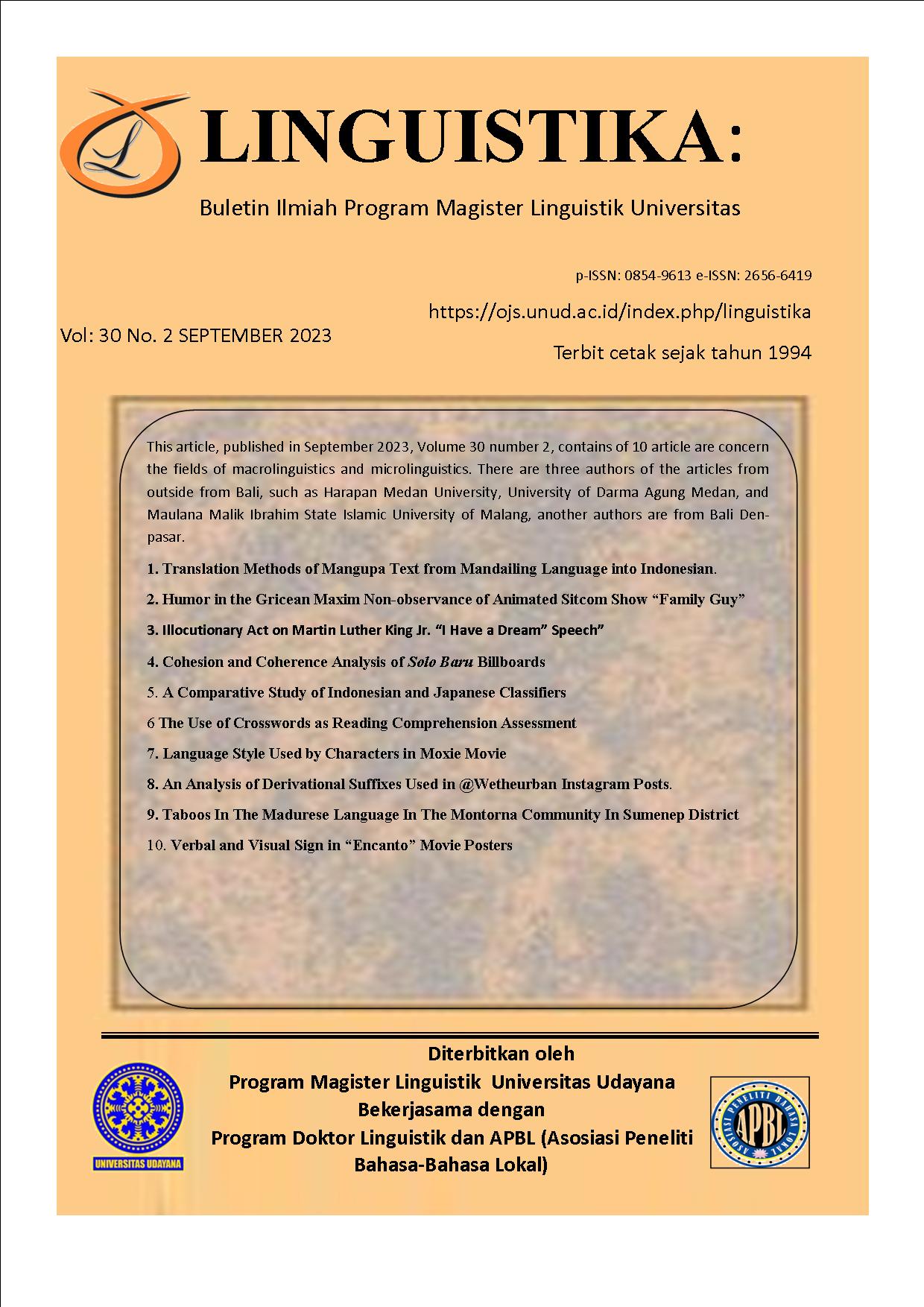Humor in the Gricean Maxim Non-observance of Animated Sitcom Show “Family Guy”
Abstract
This article aimed to find out how the non-observance of Gricean maxims was affecting the humor of the sitcom “Family Guy”. This article used a qualitative method where the data was taken from animated sitcom show “Family Guy” in a form of question-and-answer adjacency pair. This article used the observation method in collecting the data. Furthermore, the data was analyzed using content analysis method based on Grice’s cooperative principle theory which focused more on the maxim non-observance aspect. From the data collection, it showed that there were 33 maxim non-observance found, containing 19 violations of maxim, 10 flouts of maxim, 3 maxims opt out, and 1 clash of maxim. Based on the analysis, it was revealed that violation of maxim was the most used maxim non-observance due to how easy it was to create humorous situation when ones have the intention to disobey the maxim. On the other hand, the occurrences of the flout of maxim were on the second most occurred maxim non observance. The last two were opt out and clash which were not suitable when both were used for the humor aspect.













